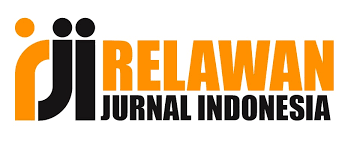Struktur Komunitas Plankton Di Perairan Gosong Tiaka Kabupaten Morowali Provinsi Sulawesi Tengah
DOI:
https://doi.org/10.56630/arj.v1i3.730Keywords:
Plankton ecological index, plankton species composition, plankton abundance, Tiaka oil fieldAbstract
Plankton are important organisms in aquatic ecosystems including marine ecosystems because of their large contribution to primary productivity and consumer abundance. The role of plankton as an important component in maintaining the balance of aquatic ecosystems and providing fishery resources that benefit the surrounding community is the basis for research on the condition of plankton in the waters of Gosong Tiaka. This study aims to assess the species composition and ecological index of plankton in the location. The research location was divided into 5 stations, namely the western part of Gosong Tiaka, northwest of Gosong Tiaka, southwest of Gosong Tiaka and northeast of Gosong Tiaka. The results showed that there were 6 phytoplankton classes and 8 zooplankton classes in the waters of Gosong Tiaka. The highest number of species for phytoplankton and zooplankton groups were found in the Bacillariophyceae class (9 species) and Copepoda class (3 species), respectively. While the highest abundance of phytoplankton and zooplankton was obtained in Chaetocerus sp. (Bacillariophyceae class) and Temora sp. (Copepoda class), respectively. This indicates that plankton from the Bacillariophyceae and copepod classes play a very important role in the study site. Based on the ecological index assessment, plankton diversity is in the medium assessment range, which means that the condition of the aquatic environment in the water location is in the medium assessment range (not under heavy environmental pressure). The plankton community in these waters is in a stable condition, indicated by the absence of dominating species.
References
Agarwal, S. K. 2008. Fundamentals Of Ecology, Aph Publishing.
Agustí, S., González-Gordillo, J. I., Vaqué, D., Estrada, M., Cerezo, M. I., Salazar, G., Gasol, J. M. & Duarte, C. M. 2015. Ubiquitous Healthy Diatoms In The Deep Sea Confirm Deep Carbon Injection By The Biological Pump. Nature Communications, 6, 7608.
Asriyana, Y. 2012. Aquatic Productivity. Jakarta: Pt Bumi Aksara.
Bunn, S. E., Balcombe, S. R., Davies, P. M., Fellows, C. S. & Mckenzie-Smith, F. J. 2006. Aquatic Productivity And Food Webs Of Desert River Ecosystems. Ecology Of Desert Rivers, 76-99.
Dimenta, R. H., Khairul, K. & Machrizal, R. 2018. Studi Keanekaragaman Plankton Sebagai Pakan Alami Udang Pada Perairan Ekosistem Mangrove Belawan, Sumatera Utara. Jurnal Pembelajaran Dan Biologi Nukleus (Jpbn), 4, 18-23.
Dursun, F. & Tas, S. 2019. Variations In Abundance And Diversity Of Phytoplankton In The Surface Waters Of The Golden Horn Estuary (Sea Of Marmara). Journal Of The Marine Biological Association Of The United Kingdom, 99, 279-290.
Dutkiewicz, S., Hickman, A. E., Jahn, O., Henson, S., Beaulieu, C. & Monier, E. 2019. Ocean Colour Signature Of Climate Change. Nature Communications, 10, 578.
Febrian, I., Nursaadah, E. & Karyadi, B. 2022. Analisis Indeks Keanekaragaman, Keragaman, Dan Dominansi Ikan Di Sungai Aur Lemau Kabupaten Bengkulu Tengah. Bioscientist: Jurnal Ilmiah Biologi, 10, 600-612.
Guo, F., Jiang, G., Zhao, H., Polk, J. & Liu, S. 2019. Physicochemical Parameters And Phytoplankton As Indicators Of The Aquatic Environment In Karstic Springs Of South China. Science Of The Total Environment, 659, 74-83.
Hastuti, A., Pancawati, Y. & Surana, I. The Abundance And Spatial Distribution Of Plankton Communities In Perancak Estuary, Bali. Iop Conference Series: Earth And Environmental Science, 2018. Iop Publishing, 012042.
Japa, L., Karnan, K. & Handayani, B. S. 2022. Quality Status Of Coastal Waters Of Special Economic Zone Of Mandalika Central Lombok Based On The Community Of Microalgae As Bioindicator. Jurnal Penelitian Pendidikan Ipa, 8, 2864-2871.
Malviya, S., Scalco, E., Audic, S., Vincent, F., Veluchamy, A., Poulain, J., Wincker, P., Iudicone, D., De Vargas, C. & Bittner, L. 2016. Insights Into Global Diatom Distribution And Diversity In The World’s Ocean. Proceedings Of The National Academy Of Sciences, 113, E1516-E1525.
Manickam, N., Bhavan, P. S., Santhanam, P., Muralisankar, T., Kumar, S. D., Balakrishnan, S., Ananth, S. & Devi, A. S. 2020. Phytoplankton Biodiversity In The Two Perennial Lakes Of Coimbatore, Tamil Nadu, India. Acta Ecologica Sinica, 40, 81-89.
Miró, J. M., Megina, C., Donázar-Aramendía, I., Reyes-Martínez, M. J., Sánchez-Moyano, J. E. & García-Gómez, J. C. 2020. Environmental Factors Affecting The Nursery Function For Fish In The Main Estuaries Of The Gulf Of Cadiz (South-West Iberian Peninsula). Science Of The Total Environment, 737, 139614.
Odum, E. P. 1971. Fundamentals Of Ecology. Printing Company Ltd.
Odum, E. P. 1993. Dasar–Dasar Ekologi. Edisi Ketiga. Penerjemah Tjahjono Samingan. Universitas Gajah Mada Press. Yogyakarta, 264.
Rosanti, L. & Harahap, A. 2022. Keberadaan Plankton Sebagai Indikator Pencemaran. Bioedusains: Jurnal Pendidikan Biologi Dan Sains, 5, 182-188.
Shalloof, K. A. S., Alaa, M. & Aly, W. 2020. Feeding Habits And Trophic Levels Of Cichlid Species In Tropical Reservoir, Lake Nasser, Egypt. The Egyptian Journal Of Aquatic Research, 46, 159-165.
Thoha, H. & Fitriya, N. 2010. The Diversity Of Plankton In Sangihe–Sangir Talaud Islands, Sulawesi, Indonesia. Majalah Ilmiah Biologi Biosfera: A Scientific Journal, 27, 112-118.
Unbekna, S., Hernawan, U., Setyobudi, E., Wijayanti, L. A., Satriyo, T. B., Aryudiawan, C. & Setiawan, R. Y. 2020. Plankton Abundance And Diversity North Of Lembata Island, Indonesia. Aacl Bioflux, 13, 2355-2364.
Wulandari, D. Y., Pratiwi, N. T. M. & Adiwilaga, E. M. 2014. Distribusi Spasial Fitoplankton Di Perairan Pesisir Tangerang. Jurnal Ilmu Pertanian Indonesia, 19, 156-162.
Yusuf, M., Robin, R., Adi, W., Hudatwi, M. A., Widianingsih, W., Hartati, R., Mahendrajaya, R. T. & Manullang, C. 2021. Phytoplankton Community Structure And It’s Relationships With Water Quality In Bangka Island, Indonesia.















